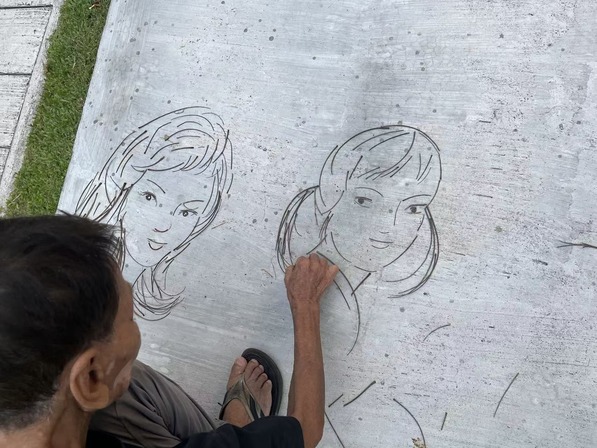M3
“R-R-R-RANK ONE!”
Recap
I’ve been quite busy with school work, applying to summer programs, and watching MasterChef.
As the 2022 MathWorks Math Modeling (M3) Challenge is coming up, I wanted to discuss some of my plans for how my team is preparing.
As a short summary, M3 is a competition in which three-to-five people get together to write a math modeling paper for 14 hours. The paper is based around solving three specific questions with flexible answers that have to be based on statistical and mathematical analysis on real-world data. The topic and questions are revealed when your team logs in, and the paper has to be handed in within 14 hours.
Your team is not allowed to communicate with other teams or people about the questions, but the rules do not have anything against doing additional research online on the topic or modeling methods.
Organization and Commitment
Anyone that wants to join one of these research paper competitions must have organization skills and self-control. Basically, be able to do work when you put your mind to it, and have a goal every time you are learning.
Since a team has five people, the spread of knowledge in specific analytical methods should be quite wide. If everyone on the team only knew about math techniques, then that team might not do as well as a team with more knowledge on computing and less on math.
Of course, to gain specific skills before the competition, time has to be spent learning. So, if there is a lack of commitment, then the team is sure to fail. Technically, only about three of the five members need to have decent skills to carry the rest of the team.
The preceding statements were written on December 16th, 2021; what follows is from December 27th, 2021.
Firstly, I would like to say that the organization of information is incredibly important to the writing process. If you don’t track the number and order of assumptions, the goals brainstormed, the sources of information, then the whole paper falls apart in the writing stage.
I learned this the hard way in 2018 when I was writing a research paper but couldn’t get the information I needed on-demand in an organized way. I had thoughts in my head that I knew were factual, but couldn’t justify in writing because I didn’t record the sources and the things they stated. So, I ended up having to do a lot more digging than I should have had to do.
New Perspective
While learning time-series analysis or differential equations for M3 is a good idea, it is definitely more important to have the creativity required for critical thinking. After reading the guidebook on the organizer’s website, I have realized that there are parts of math modeling that are more important and applicable than knowing about a specific model.
Manhole Covers
One of these is being able to think of and justify assumptions for a given problem. A nice exercise is to work backwards. For example, a problem that my chemistry teacher asked the class was, “Why are manhole covers (lids on the ground that lead into sewers) round?” Take a moment to consider, and realize that every answer is based on some kind of assumption, the same assumptions that were made by designers, based on maximizing the ability of the design to reach a goal.
For instance, if you said, “So that the lid cannot fall into the hole when turned sideways,” then that design is built on the assumption that the lid can only be a flat shape (the “assumption” doesn’t really work for this example because you have full information) and the goal is to maximize safety. The modeling process really shines in these cases where the intentions (the goals) can be seen in the end product.
Self-Criticism
After making the model, you still have to account for the strengths and weaknesses in writing. It’s definitely easy to point out the strengths of the model that you made because of pride and attachment, but pointing out weaknesses is more difficult because of those reasons. So, what really needs to happen is a shift in attitude.
Being able to find weaknesses might actually make you better at math modeling than if you chose not to. It’s all about expanding vision through looking at new perspectives. If you care more about creating a model that is strong than the ability to criticize a model, then you should rebalance those values.
Team Time
To be honest, doing any project with a group of high schoolers means that not everyone is going to be conscientious about their time allotment. It might be brainless scrolling through social media or playing some video games, but a lot of people don’t have it takes. Of course, I am guilty of the same things.
I previously organized my team’s meetings like this: everyone does research and sends their notes to a Google Drive folder, and then each person checks someone else’s work at the end of the week. This did not work at all. It may have been because it is currently Christmas break, but that does not justify anything. How can anyone be trusted to manage their time when they are not capable of doing it when they have nothing to do all day?
So, as I learned from some YouTube video, just do something consistently for a small amount every day and then build up. It requires repeated small actions to make a change. This is evident in how squirrels learn to navigate an obstacle course little by little every day:
To apply this principle, I told my team to just research or read one thing every day and then report back. No one is allowed to do more. Everyone goes on the same document and writes what they learned, every day. This will begin to allow the team to not feel burned out or negative because they did too much in one sitting. After all, the greatest source of stagnation is quitting.
I don’t have confirmation of whether this will work, but if it doesn’t work, then we were never meant to succeed in the first place.






Leave a comment